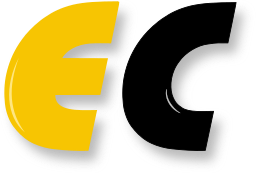UrbComp 2025: The 14th International Workshop on Urban Computing Toronto, Canada, August 3-4, 2025 |
| Conference website | https://urbcomp25.netlify.app/ |
| Submission link | https://easychair.org/conferences/?conf=urbcomp2025 |
| Submission deadline | May 31, 2025 |
Aims and Scope
The goals and framework of urban computing result in four folds of challenges in the context of data mining:
- Adapt machine learning algorithms to spatial and spatio-temporal data: Spatio-temporal data has unique properties, consisting of spatial distance, spatial hierarchy, temporal smoothness, period, and trend, as compared to image and text data. How to adapt existing machine learning algorithms to deal with spatio-temporal properties remains a challenge.
- Combine machine learning algorithms with database techniques: Machine learning and databases are two distinct fields in computing science, having their own communities and conferences. While people from these two communities barely talk to each other, we do need the knowledge from both sides when designing data analytic methods for urban computing. The combination is also imperative for other big data projects. It is a challenging task for people from both communities to design effective and efficient data analytics methods that seamlessly and organically integrate the knowledge of databases and machine learning.
- Cross-domain knowledge fusion methods: While fusing knowledge from multiple disparate datasets is imperative in a big data project, cross-domain data fusion is a non-trivial task for the following reasons. First, simply concatenating features extracted from different datasets into a single feature vector may compromise the performance of a task, as different data sources may have very different feature spaces, distributions and levels of significance. Second, the more types of data involved in a task, the more likely we could encounter a data-scarce problem. For example, five data sources, consisting of traffic, meteorology, POIs, road networks, and air quality readings, are used to predict the fine-grained air quality throughout a city. When trying to apply this method to other cities, however, we would find that many cities cannot find enough data in each domain (e.g. do not have enough monitoring stations to generate air quality data), or may even not have the data of a domain (like traffic data) at all.
- Interactive visual data analytics: Data visualization is not solely about displaying raw data and presenting results, though the two are general motivations of using visualization. Interactive visual data analytics becomes even more important in urban computing, seamlessly combining visualization methods with data mining algorithms as well as a deployment of the integration on a cloud computing platform. It is also an approach to the combination of human intelligence with machine intelligence. Interactive visual data analytics also empower people to integrate domain knowledge (such as urban planning) with data science, enabling domain experts to work with data scientists on solving a real problem in cities.
Topics of Interest
Topics of interest include, but are not limited to, the following aspects:
- Urban sensing technologies
- Urban data management technologies
- Managing urban big data in the cloud
- Anomaly detection and event discovery in urban areas
- Cross-domain knowledge fusion
- Trajectory data mining techniques and applications
- Interactive visual data analysis
- Urban computing for urban planning
- Urban computing for transportation systems
- Urban computing for the environment
- Urban computing for urban energy consumption
- Urban computing for social applications
- Urban computing for the economy
- Urban computing for public safety and security
- Federated learning for urban computing
- Advanced machine learning and data mining techniques for urban data
- LLMs and foundation models for urban computing
Submission Guidelines
We invite two kinds of submissions:
- Full research papers – up to 9 pages (8 pages at most for the main body and the last page can only hold references)
- Vision papers and short technical papers - up to 5 pages (4 pages at most for the main body and the last page can only hold references)
All manuscripts should be submitted in a single PDF file including all content, figures, tables, and references, following the new Standard ACM Conference Proceedings Template. For LaTeX users: unzip acmart.zip, make, and use sample-sigconf.tex as a template; Additional information about formatting and style files is available online at: https://www.acm.org/publications/proceedings-template. Paper submissions need to include author information, it is not double-blinded..Each paper will be assigned to two reviewers for a peer review.
Awards and Journal Publication
We will set one best paper award according to the review results and presentation of a paper.
Important Dates:
| Workshop paper submission | May 31, 2025 (11:59pm, AoE) |
| Workshop paper notification | June 23, 2025 |
| Camera-ready | July 6, 2025 |
| Workshop date | August 3, 2025 |
